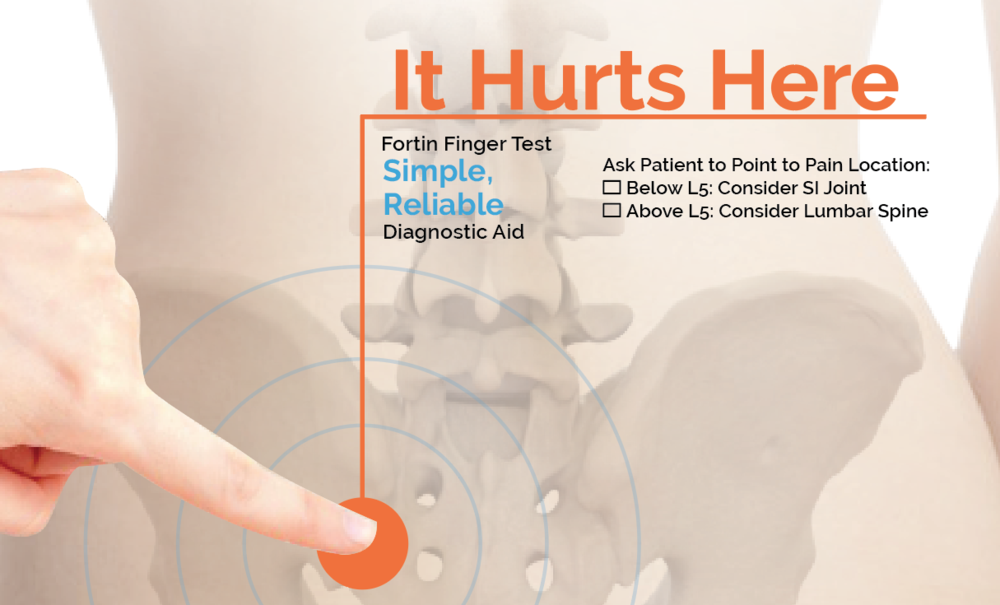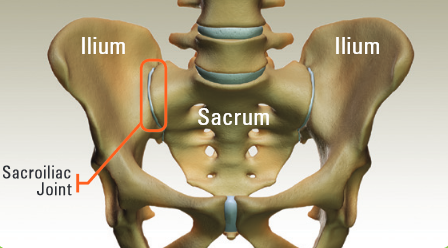Sacroiliac (SI) Joint Fusion
YOUR PAIN MAY BE FROM THE SI JOINT

Find out if you are a candidate!
Call (855) 255-2737
or
Fill out the form below
What is the Sacroiliac (SI) Joint?

The sacroiliac (SI Joint) can be found in the pelvis, right between the ilium and sacrum. It is also the lowest part of the spine and sits right above the tailbone. This joint is very important because it transfers energy from the upper part of the body to the lower part and is an essential component for shock absorption during activities such as walking.
15-30% of patients with chronic low back pain may have pain arising from the sacroiliac (SI) joint.
Yet, most physicians are not trained to consider the SI joint when evaluating
lower back pain. If you are experiencing lower back pain, it may be coming from your SI joint.
What are the symptoms of an SI Joint Dysfunction?
SI joint symptoms may present as pain, or feelings of numbness, weakness or tingling in the lower back, buttock and/or legs. Symptoms may be similar to those from other spine conditions such as a herniated disc or a compressed nerve root.

Some symptoms of SI Joint dysfunction may include the following:
- Pain in a specific region of your lower back
- Pain when sitting down
- Difficulty when sleeping
Pain in the Sacrum
Pain in the sacrum can be uncomfortable and frustrating to deal with. If you are experiencing this, it is most likely stemming from the sacroiliac (SI) joint in the spine. Like the other joints in the body, the SI joint can degenerate over time. The ligaments around the joint can stiffen, or they can develop tears and loosen the joint too much. Either scenario can cause the joint cartilage to wear away, leading to the sacral and iliac bones rubbing together and causing pain. The SI joint is also a synovial joint, which means it is filled with a lubricant called synovial fluid. Over time, the synovial fluid may become inflamed and cause further discomfort. This type of pain is also referred to as SI joint dysfunction. Sacrum pain caused by SI joint dysfunction can take many forms.
Symptoms can include:
- Groin pain
- Muscle weakness in the legs
- Pain in the lower back
- Pain when moving standing after sitting for a long period of time
- Pain when standing for long periods of time
- Radiating pain in the hips, buttocks, and legs
- Tingling or pins-and-needles sensations in the lower extremities
How pain in sacrum is diagnosed?
To appropriately diagnose a dysfunctional sacroiliac (SI) joint and provide the treatment right for you, our doctors will look at your health history, including symptoms, a physical examination including the SI joint provocative maneuvers, and imaging studies. The doctor will also need to rule out other sources of low back pain such as the hip or spine, so there is less chance of misdiagnosis.
Sacrum “Quick Answers”
Q. Where is the sacrum located?
The sacroiliac (SI Joint) can be found in the pelvis, right between the ilium and sacrum. It is also the lowest part of the spine and sits right above the tailbone, or coccyx.
Q. What are the symptoms of pain in the sacrum?
Some symptoms of SI joint pain can include:
- Generalized pain in lower back/buttock region
- Sharp or stabbing pain when movement occurs
- Pain in sleeping positions and the changing of sleeping positions
- Pain or stiffness when sitting for a long period of time
Q. What causes pain in the sacrum?
More often than not, pain the sacrum is caused by a joint aggravation or irritation triggered by overuse. Many times, strenuous exercise activities such as cross fit can contribute to this type of pain. With age also comes the degeneration of the fluid within the joint called synovial fluid. Your joints need this because when it begins to wear, your bones rub together. In the minority of cases, pain in the sacrum is related to another generalized inflammatory arthritic syndrome such as lupus or rheumatoid arthritis.
Q. How do you relieve sacrum pain?
- Pain medication. And anti-inflammatory medications (NSAIDs, such as ibuprofen or naproxen) may be recommended for mild to moderate pain relief.
- Sacroiliac joint injections
- SI Joint Fusion
What are the benefits of an SI Joint fusion procedure?
Benefits of SI Joint fusions include:
- Minimal down time
- Small incisions
- No hospital stay
- Regain quality of life
You do not have to live with pain
Whether it is sciatica, spinal stenosis, degenerative disc disease, or any other spine condition that is causing you pain, we have the answers to your problems. Our physicians are trained to diagnose, manage, and treat a wide range of spinal conditions.
Our focus has been and will continue to be providing individualized care designed to address your personal needs. It is never acceptable to live with pain. Pain robs your life of joy and robs your life of meaning. Nothing is more important at Physician Partners of America than helping you get back to a pain-free life.
